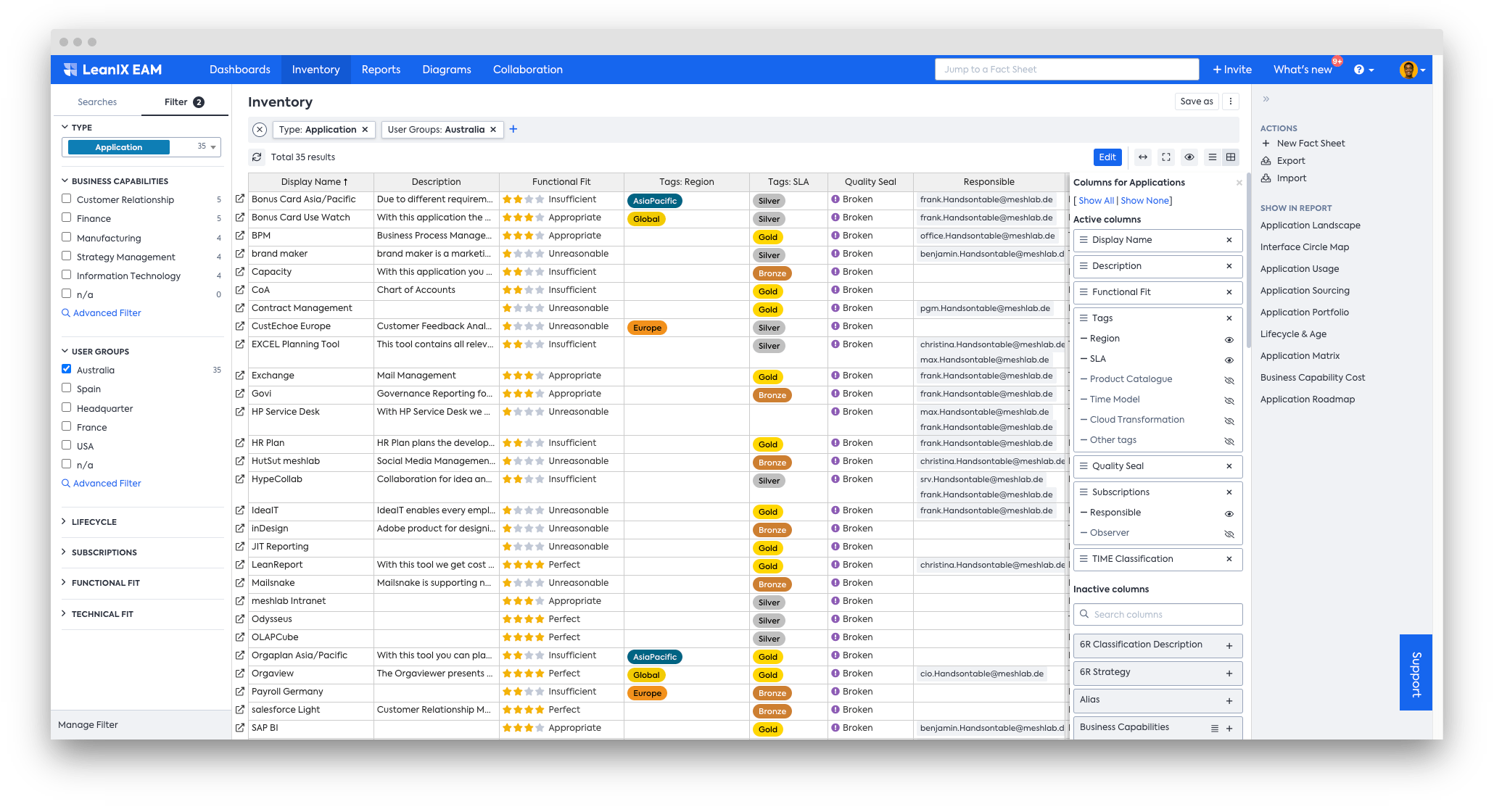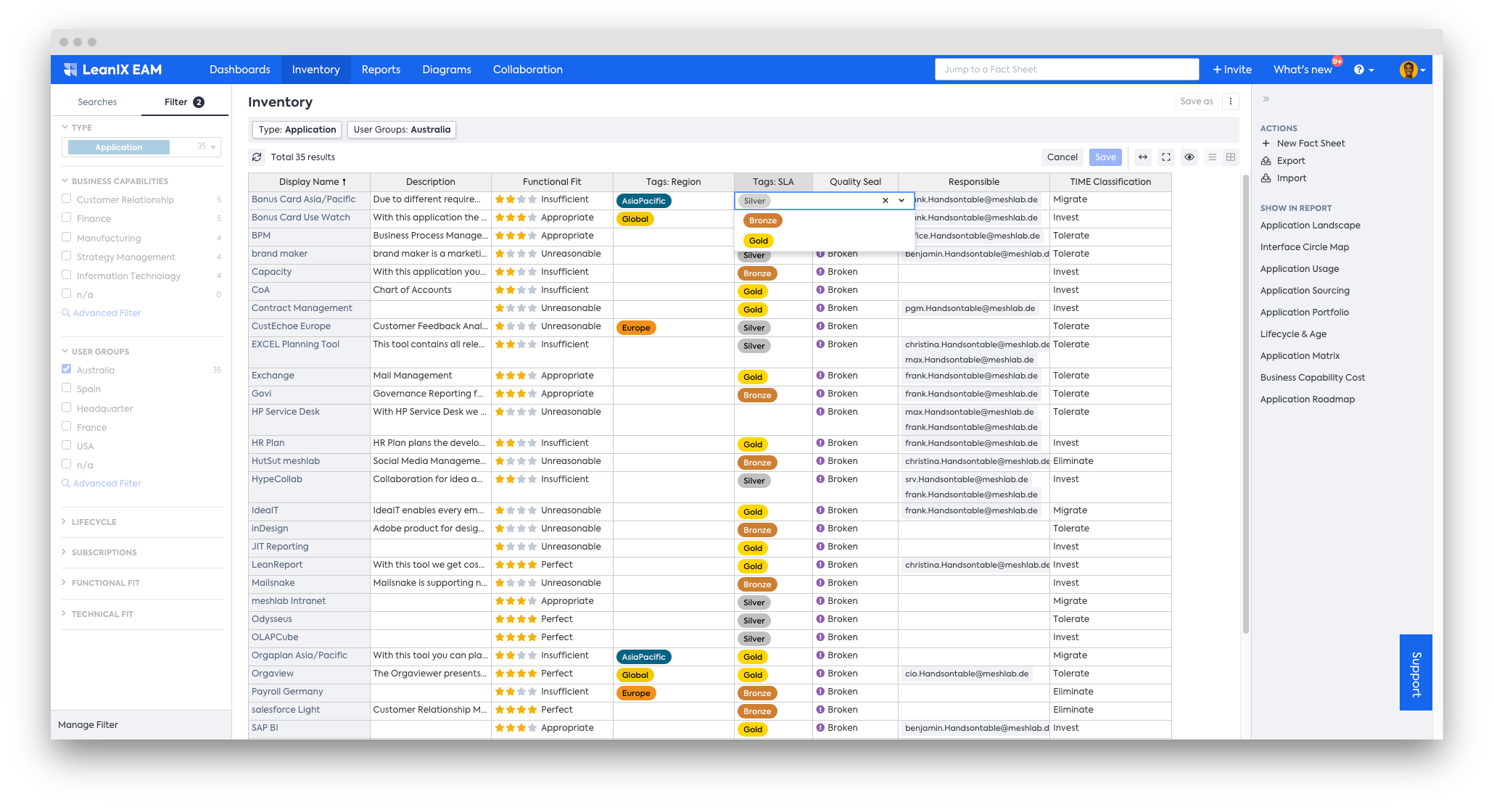Overview
LeanIX is a market leader in the Enterprise Architecture software segment. With their mission to be the "Google Maps for Software," they help customers achieve IT landscape transparency and drive continuous transformation. LeanIX's 1000+ customers include leaders in a range of industries, from manufacturing, pharma, and consumer packaged goods, to finance, tech, education, and government.
While working as a consultant at DHL, André Christ, CEO and co-founder of LeanIX, found that companies still struggled to create a reliable and accessible overview of their IT landscape. There were existing solutions on the market, but they lacked critical capabilities. And the people who needed the information had to consult numerous sources to collect it. There was no single source of truth.
So, André and his co-founder set out to build a tool anyone could use - and intentionally designed to support collaboration - that would provide companies with detailed, up-to-date insight into their technology and all its interdependencies. This tool eventually became LeanIX's Enterprise Architecture Management (EAM).

The Challenge
Companies working with LeanIX seek to model their current IT architecture for a clear understanding of what they have. This allows them to both identify areas for rationalization that will increase efficiency and reduce IT costs, as well as design an actionable roadmap towards their future architecture. With a comprehensive inventory in LeanIX, companies can more smoothly plan and execute IT transformations. They can also make better, faster, and more informed business decisions on mergers and acquisitions, regulatory compliance, and information security.
Without software to model the IT landscape, customers tend to face a huge bottleneck in their information flow. The bottleneck arises because the enterprise architect (EA) - or an IT asset manager, if the company doesn't have an EA - is the only one with access to the manually updated spreadsheets where this information is maintained. In other words, information tends to live in a silo and is not readily available across the organization.
As a result, if C-level executives have questions about the IT landscape, they need an architect or someone else in IT to generate a report for them. And since there's no one, consistent source of data, they are never sure if they can trust what they get.
The key challenge customers face when driving any kind of organizational transformation is lack of insight - into the present state, into dependencies, into true costs, and so on. Frankly, they often don't really know much about their actual IT architecture. And even when they have a model of their IT landscape, it may turn out to be useless because it is incomplete, inaccurate, and unactionable.
The Solution
The way to resolve these challenges is an easy-to-use, collaborative Enterprise Architecture tool available to anyone in an organization.
By allowing customers to model their current IT landscape accurately and with a granular level of detail, LeanIX's EAM eliminates information bottlenecks. Anyone can find out, for example, the business purpose for a particular piece of software, who's responsible for it, and who uses it.
Given the amount and types of data customers want to collect, an EAM needs some kind of spreadsheet-like functionality. LeanIX chose Handsontable's JavaScript data grid to power the Inline Table Editing feature of their tool.

What the developers at LeanIX appreciate most about Handsontable is its UX. Many people, Enterprise Architects especially, are used to working in Excel. Handsontable offers an Excel look and feel. This means users can jump right in and begin using the data grid without any extra training.
Fact Sheets are a key element in LeanIX's data model and they can contain relations to one or more other Fact Sheets. In the Inline Table Editing, Handsontable's Merge Cells feature helps to ensure that users easily understand which information belongs to the Fact Sheet itself and which to related Fact Sheets. And it is easy to use for developers.
Another aspect that is important for LeanIX is Handsontable's support for custom editors. With all the field types in the EAM, implementing this feature has proven very useful. Users can also do bulk changes, which helps save a lot of time and effort, especially when dealing with large datasets.
The Result: Smoother, more transparent IT transformations
Customers say that LeanIX EAM is invaluable for their business and IT as well as super-intuitive and easy to use. Having a single source of truth for their IT landscape makes their businesses more efficient and productive. It also helps them navigate transformations in a way that ensures an optimal outcome.
To LeanIX, Handsontable's main value has been in helping create a more efficient development process. Implementing the data grid has allowed them to add functionalities to their tool with less effort than if they'd built their own. They consider it a feature-rich, well-oiled machine, adding that it's been smooth to work with and has helped save them a lot of time.
For us, Handsontable has worked well, and I think it works well with any frontend framework.
